You searched for: 谷歌推广平台必须找代理商吗【TG飞机:@bapingseo】代谷歌竞价seo投放包上【TG电报:@bapingseo】斯洛伐克资源通道【Telegram:@bapingseo】彩之云下载购彩ivapp下载手机版久旺28登录电脑版?9UsP9e/0sPZhS.html
<< Previous | Displaying results 376-400 of 459 for "谷歌推广平台必须找代理商吗【TG飞机:@bapingseo】代谷歌竞价seo投放包上【TG电报:@bapingseo】斯洛伐克资源通道【Telegram:@bapingseo】彩之云下载购彩ivapp下载手机版久旺28登录电脑版?9UsP9e/0sPZhS.html" | Next >>
-
Naftali Saleschutz
ID CardNaftali was the youngest of nine children born to devout Hasidic Jewish parents living in Kolbuszowa. In the Hasidic tradition, he wore a long black coat and shoulder-length earlocks. He first faced antisemitism in the second grade when his teacher cut one earlock off each Jewish boy. Naftali escaped the teacher's shears, and his father, a respected merchant, had the teacher suspended. 1933-39: On September 9, 1939, the German army invaded Naftali's town and decisively defeated a small contingent of…
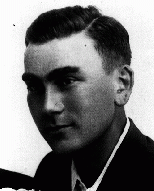
-
Leo Bretholz
ID CardLeo was the oldest child and only son of Polish immigrants in Vienna. His father, a tailor and amateur Yiddish actor, died of an illness in 1930 when Leo was 9. His mother supported the family by working as an embroiderer; Leo helped out by looking after his two younger sisters. They lived in one of Vienna's large Jewish districts on the east side of the Danube Canal. 1933-39: Anti-Jewish sentiment escalated after Germany annexed Austria in 1938. Jewish men, including some of Leo's uncles and neighbors,…

-
Dorotka Goldstein
ID CardDorotka was the youngest of three children in a Jewish family. Her father was the director of the Jewish Telegraphic Agency in Warsaw and worked for a popular newspaper. An avid Zionist, he had traveled to Palestine. 1933-39: Dorotka's father established a soup kitchen in Warsaw for Jewish refugees who had fled from Germany. In September 1939 Dorotka was supposed to begin first grade when war broke out. Her father escaped to Vilna with other Jewish leaders. People were suffering, but she didn't understand…
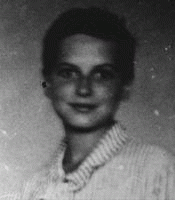
-
Margot Heumann
ID CardThe older of two girls, Margot was born to Jewish parents living in a village close to the Belgian border. The Heumanns lived above their general store. Across the street lived Margot's grandfather, who kept horses and cows in his large barn. When Margot was 4, her family moved to the city of Lippstadt. As a young girl, she learned to swim in the Lippe River, which flowed behind their garden. 1933-39: When Margot was 9, her family moved to the nearby city of Bielefeld, where she was enrolled in public…
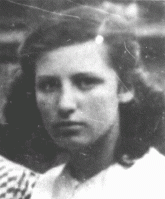
-
Welwel Wainkranc
ID CardThe third of five brothers, Welwel was born to Jewish parents who lived 35 miles east of Warsaw in the small predominantly Jewish town of Kaluszyn. His father was a cattle merchant who purchased cows and sold the meat to butchers in the Warsaw region. Welwel spent most of his free time with a group of Jewish friends who lived in his neighborhood and who attended the same public school. 1933-39: Every summer evening Welwel, Abram Kisielnicki, and some other pals, like to stroll along Kaluszyn's main…

-
Chaim David Jegher
ID CardDavid was one of six children born to religious Jewish parents in Rona de Jos, a town in northwest Romania. The Jeghers subsisted through a variety of enterprises. Besides farming, they bottled their own wine and brandy and produced dried fruit for distribution in Romania and in parts of Czechoslovakia and Hungary. David's father also ran a local transportation and delivery service. 1933-39: Religious school was from 6:30 to 8:00 a.m. David's mother would wait outside the building with some breakfast for…
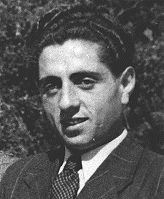
-
Ruth Gabriele Silten
ID CardGabriele was the only child of Jewish parents living in the German capital of Berlin. Her grandfather owned a pharmacy and a pharmaceuticals factory, where Gabriele's father also made his living. 1933-39: In 1938 the Nazis forced Ruth's grandfather to sell his factory and pharmacy for very little money to an "Aryan" German. After that, her father decided they should move to Amsterdam where it was safer for Jews. She was 5 years old and wanted to stay in Berlin. She didn't understand why she had to leave…
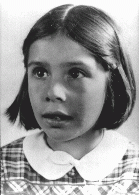
-
Ida Szczupakiewicz
ID CardIda was the oldest of three children born to a Jewish family in northeastern Poland in Malkinia, a town situated on the right bank of the Bug River. Ida's father was a grain merchant and her family lived in the same house that her grandfather had owned. 1933-39: Ida was 9 when Germany invaded Poland. At once her family hid on some nearby farms but a few weeks later they returned home. When their neighbor, her father's best friend, became a Nazi informant, her father had them each pack a small bag--they…

-
Helga Leeser
ID CardThe older of two sisters, Helga was raised by prosperous, non-religious Jewish parents in the small Catholic town of Duelmen in western Germany. Her family owned a linen factory. Before marrying Helga's much older father in 1927, her mother had been a Dutch citizen. As a child, Helga looked forward to vacations in the Netherlands with its comparatively relaxed atmosphere. 1933-39: At age 6 Helga began attending a Catholic elementary school. Antisemitism wasn't a problem until the night of November 9, 1938…
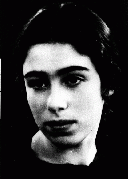
-
Genya Rotenberg
ID CardGenya and her brother, Nahum, were raised by Jewish parents in Lodz, Poland's second-largest city and an industrial center. Before the war, one-third of Lodz's inhabitants were Jewish. Genya's parents placed emphasis on their children's education. 1933-39: In 1939, when Genya was 9, the Germans occupied Lodz. After that, it was forbidden for "Jews, Gypsies and dogs" to be in public places. Since Jews weren't allowed to go to school, her parents arranged to tutor her secretly at home, but she couldn't keep…
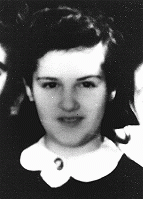
-
Jocheved Kuzda Kasher
ID CardJocheved, or Jadza as she was called at home, was born in the industrial city of Lodz, Poland's second-largest city. Before the war, one-third of Lodz's inhabitants were Jewish. The Kuzdas kept a traditional Jewish home and placed importance on their children's education. Jocheved had two older sisters, Sarah and Regina. 1933-39: Jocheved was 9 when the war broke out in September 1939. Instead of starting school, she stayed at home listening to the bombs exploding. Her father and sister tried to get to…
-
Estelle Laughlin
ArticleExplore Estelle Laughlin’s biography and learn about her experiences during the Warsaw ghetto uprising.
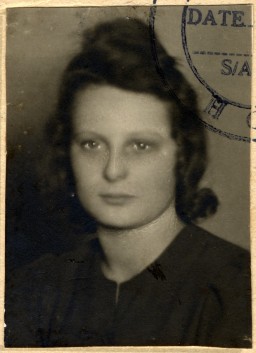
-
The "We Will Never Die" Pageant
Article"We Will Never Die" was a 1943 musical stage performance that raised awareness among Americans about the murder of European Jews. Learn more.

-
Jozef Tiso
ArticleJozef Tiso was a Slovak politician and a Roman Catholic priest. From 1939 to 1945, he was the president of the Slovak Republic, one of Nazi Germany’s allies.
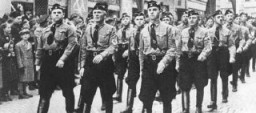
-
Dismissal letter from the Berlin transit authority
DocumentA letter written by the Berlin transit authority (Berliner Verkehrs Aktiengesellschaft) to Viktor Stern, informing him of his dismissal from his post with their agency as of September 20, 1933. This action was taken to comply with provisions of the Law for the Restoration of the Professional Civil Service. On April 7, the German government issued the Law for the Restoration of the Professional Civil Service (Gesetz zur Wiederherstellung des Berufsbeamtentums), which excluded Jews and political opponents…

-
German invasion of Norway: Narvik
FilmGermany invaded Norway on April 9, 1940, simultaneously attacking Norway's coastal cities from Narvik in the far north to Oslo in the south. Narvik was the scene of fierce battles between German forces and the Allies, who landed troops by sea in support of the Norwegians. Narvik changed hands several times. However, British, French, and Polish forces were finally withdrawn in June 1940 due to the success of the German campaign in western Europe. German victory in Norway secured access to the North Atlantic…
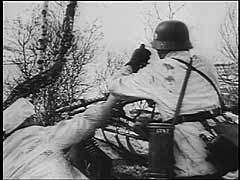
-
US condemnation of Kristallnacht
FilmOn November 9, 1938, the Nazis led a nationwide pogrom against Jews. During the pogrom, known as "Kristallnacht" (the "Night of Broken Glass"), bands of Storm Troopers (SA) destroyed thousands of Jewish-owned businesses and hundreds of synagogues. Almost 100 Jews were killed in the process. This footage shows scenes from a protest rally in New York City. Rabbi Stephen S. Wise voiced the outrage of the American Jewish community. As part of an official protest by the United States government against the…
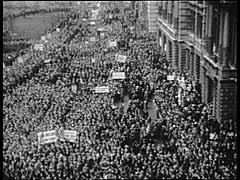
-
Defeat of Nazi Germany, 1942-1945
MapBeginning in 1938, the Nazis increased their territorial control outside of Germany. By 1942, three years into World War II, Nazi Germany reached the peak of its expansion. At the height of its power, Germany had incorporated, seized, or occupied most of the continent. However, also in 1942, the Allied Powers started to systematically bomb Germany. They would continue to do so until Germany's surrender in 1945, weakening the war effort and demolishing cities. Slowly, the Allied Powers began pushing…

-
Elie Wiesel Timeline and World Events: 1928–1951
ArticleSurvivor Elie Wiesel devoted his life to educating the world about the Holocaust. Learn about key events in the world and his life from 1928–1951.

-
Testimony on the Escape from the Mir Ghetto by Eliezer Breslin
ArticleRead a summary extract from Eliezer Breslin’s testimony on escaping from the Mir ghetto, given during the WWII war crimes investigation into Semion Serafinowicz.
-
Glossary
ArticleAntisemitism: hostility toward or hatred of Jews as a religious or ethnic group, often accompanied by social, economic, or political discrimination. Appellplatz: German word for roll call square where prisoners were forced to assemble. Aryan: Term used in Nazi Germany to refer to non-Jewish and non-Roma (Gypsy) Caucasians. Northern Europeans with especially "Nordic" features such as blonde hair and blue eyes were considered by so-called race scientists to be the most superior of Aryans, members of a…
-
Adolf Hitler
ArticleAdolf Hitler, leader of the Nazi Party, aimed to eliminate Europe's Jews and other perceived enemies of Nazi Germany. Learn more.

-
Anti-Jewish Legislation in Prewar Germany
ArticleNazi anti-Jewish laws began stripping Jews of rights and property from the start of Hitler’s dictatorship. Learn about antisemitic laws in prewar Germany.

-
Alfred Rosenberg: Biography
ArticleExplore a biography of Alfred Rosenberg, influential Nazi intellectual who held a number of important German state and Nazi Party posts.
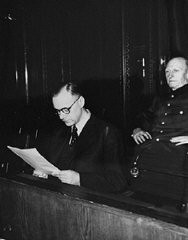
-
Blechhammer
ArticleThe Germans established the Blechhammer camp as a subcamp of Auschwitz in April 1941. Learn about the camp's history and conditions there.
